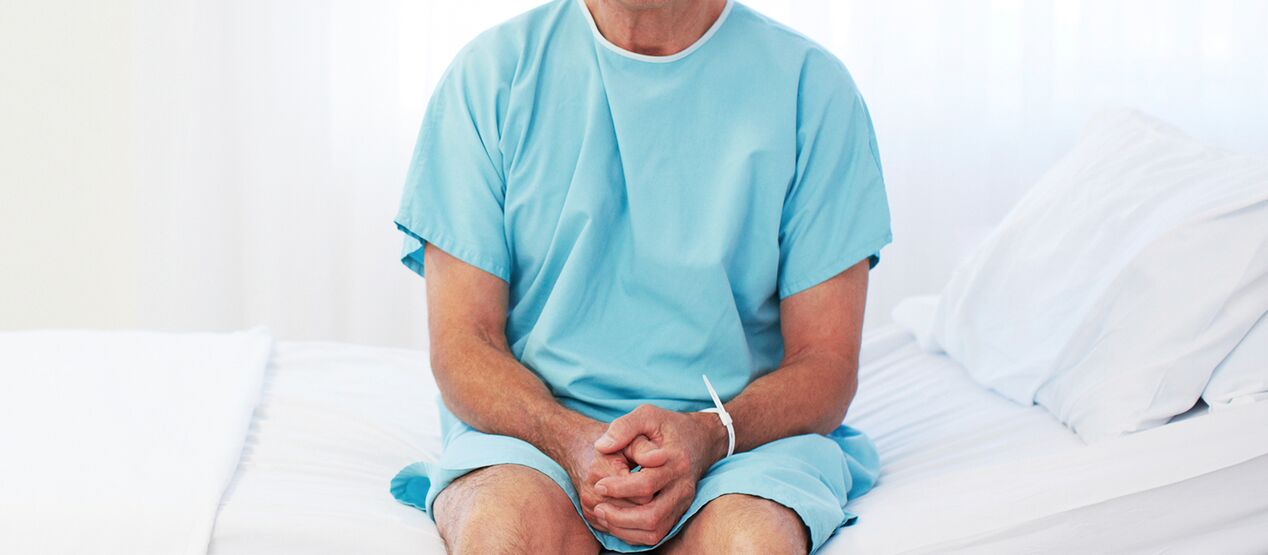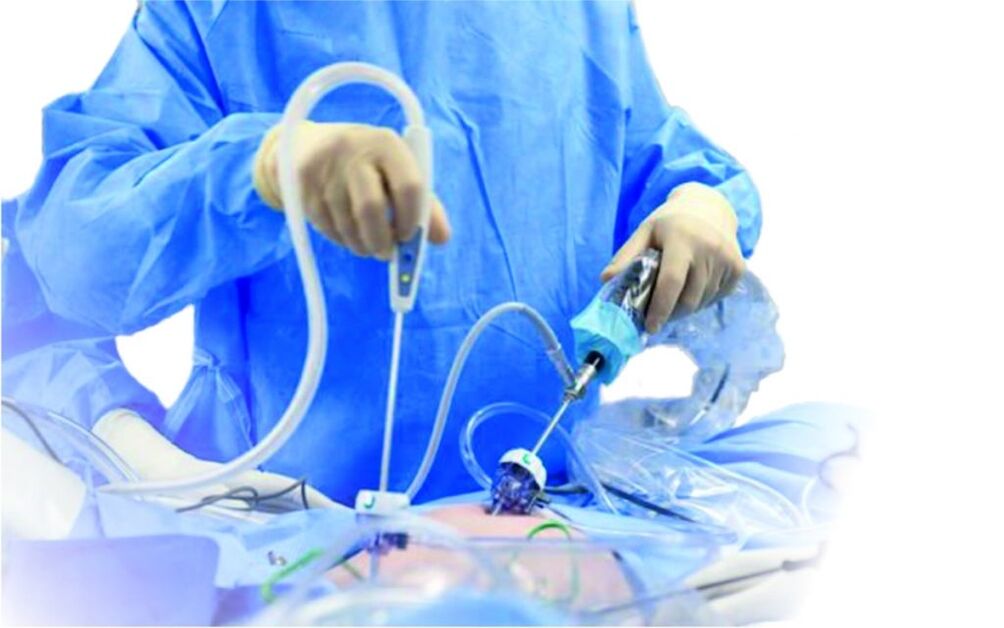The prostatitis is located directly under the bladder and the second part of the male prostate gland.
Every 7 people aged 35 are suffering from prostatitis and are increasing in the influence of external and internal factors in the risk of developing a bare inflamed process.

The inflammation of the prostate gland can develop for various reasons, doctors distinguish them:
- Violation of blood micro turnover in the pelvic bodies - it causes stagnant processes and helps increase the prostate gland in size. Staging processes are facilitated with the obesity and behavior of the sedentary sedentary lifestyle.
- In other bodies flowing in bacteria, these diseases such as tissue, viruses or protozoic, cysty, cryertitis, pyelonephritis, pyelonephrit can provoke the prostati. The causes of infection, there are an infection in remote areas and bodies, prostate can enter prostate with blood flow and lymph.
- Injuries and decomposes of soft tissues of the abdomen, perineum and foreign genital organs - this is carried by a loss of blood and impaired blood;
- Hypothermia of the body.
- Chronic constipation.
- Hormonal disorders.
- The stormy or, in the contrary, not, both sexual life, both sexual relations, but also a rare intimate relationship, but also a rare intimate relationship), but also rare intimate relationships).
Distinguish the sharp and chronic form of the disease.
The acute prostatitis is suddenly accompanied by the following symptoms of the general well-leading background, starting from the beginning of the following symptoms:
- vibrations and weakness;
- General malaise;
- Irritation and annoyance increased;
- Increasing body temperature (37, 5 degrees not high);
- to pull or cut the pain in the lower abdomen and perineum;
- Often the desire to urinate while maintaining the feeling of blading unaccountable unloading;
- Challenges with the pain of the river and intestinal movements.
In the absence of a diagnosis and time, acute prostatitis can be complicated by the release of the will from the urethra from the urethra.
In transition to a chronic form of the course in the passage of the disease, the prostatitis seems to be the clinical signs and a patient recovery. The characteristics of the chronic inflammatory process in the prostate gland burns along the urethra along the urethra, which can be developed during urine and defecation. Gradually, the disease moves forward and causes impossibility. Chronic prostatitis provides periods of remission and exacerbation, but even in the moments of brevity, symptoms are not pronounced as in a sharp form. The following symptoms appear clinically:
- difficulties with an erection;
- It is impossible to complete the sex with discharge;
- Decrease in sex drive;
- Excretion with a mixture of white floss from Uretra Mucus;
- the feeling of incomplete discharge of the sac;
- to draw pain in the lower back, pubis and groin;
- The flow of poor urine - it is observed as a result of the narrowing of the urethra of the growing prostate.
A chronic slow-inflammatory process in the urethra is irritating the nervous ends of the pelvis and causes permanent urine in the night. Many men are ashamed to see a doctor with such a subtle problem, which increases the risk of developing such serious complications such as fully erectile dysfunction, infinity and even prostate cancer.
In addition, a chronic infection enters the blood flow and lymphs, pathogens in a prostate, increases the risk of acute inflammation, urine and kidney failure.
The constant urinary assembly of the sack and urethra creates favorable conditions for the emergence of salt crystals, and then stones - often in parallel with prostatitis urania.
The diagnosis of prostatitis is made by a doctor's urologist. Diagnosis, determine the picture and cause of an inflamed process in the prostate gland, a number of exams are assigned:
- The palpation of the prostate is carried out through the rectum and allows the size of the pus or mucus after the pus or mucus, pain, mucus or release of the mucus;
- Small discharge from the urethra - the emerging material is sent to study the laboratory;
- Urinary analysis is common, etc. ;
- Ultrasa of pelvic bodies and prostate gland.
If the pathological process is suspected of spreading the pathological process, the patient is carried out by systen - examined using an optical device equipped with an optical system at the walls of the bladder walls.
In the diagnosis of the prostatitis, it is very important to distinguish from the adenom of prostate and other urological diseases with a similar clinical course.

The treatment of a chronic form of acute and chronic prostatitis is different, so patients are not self-employed.
The sharp form of non-acute prostatitis is treated thoroughly using plant preparations and anti-genishing drugs.
The principles of therapy for the sharp form of bacterial prostatitis depend on how much the symptoms of the disease are declared.
A distinctive feature of the bacterial prostatitis is a sharp starting and rapid growing symptoms of the body - nausea, vomiting, headache, high body temperature. The bladder process is accompanied by perineum by cutting the pain in the lower abdomen and given to the bottom. Very often the purulent process is connected and the abscess is developing.
Acute bacterial prostatitis is being treated in the hospital because the patient's condition may be extremely serious. Therapy consists of a complex approach:
- The patient should observe the bed rest;
- Antibiotics are determined - macrolids, fluororosporins;
- Preparations to improve blood microcirculation are selected in the pelvic bodies. They ensure that the lymph and venous blood are released, which reduces the prostate and inflammatory process;
- Oral, medications are shown in a group of non-interventional anti-aircraft drugs. These drugs reduce not only the inflammatory process, but also eliminate pain syndrome;
- Analgesics - You can take tablets inside or submit rectal candles;
- To overcome the body's drunkenness, the physiological solution of sodium with glucose is being introduced as intravenous.
Important! Prostate massage is strictly prohibited because the risk of sepsis is high.
Surgical intervention for prostatitis only develops a sharp delay in the sick urine and does not have a way to vacate the sac. You cannot do without surgery and in a abscess of the prostate gland.
The prostatitis treatment course lasts 14 days, after which the patient once again commits a comprehensive examination to evaluate the effectiveness of therapy. If necessary, the progress of treatment is extended and regulated.
The treatment of chronic prostatitis is different and mainly depends on the stage of the pathological process of the course. If the inflammatory process is exacerbated, therapy is also similar to the therapy, as in a sharp prostatitis.
This is the treatment of chronic prostatitis during remission:
- Accepting the course of non-antiectivization drugs. Medications for at least 3 days and sometimes up to 5 days a day.
- Preparations that contribute to the improvement of venous and lymph flow.
- Immunomodulators.
- Antidepressants and Sedatives help to normalize sleep and eliminate irritation.
- Polyvitamin complexes rich in zinc, selenium, vitamins V.
Patient physiotherapy treatment is provided in the phase of the inflammatory process of the prostate:
- Prostate massage;
- ultrasound;
- Electrophorez;
- magnetotherapy;
- microwave hypertermi.
With the indifferent chronic prostatitis, the patient needs operation sometimes. Can be carried out in two ways:
- Transuretral resection;
- prostatectomy.
Although this method of surgical treatment is carried out under general anesthesia, it applies to minimally invasive interventions. During the procedure, Rezachekop is presented in the Uretra frame equipped with electric currents. These electrical impulses move with electrical noise and partially produce the texture of the prostate gland. This method of interference is not a large plus blood loss, because electric waves are treated only the blood vessels that prevent bleeding from the prostate.
Transuretral resection makes the patient a lot easier - after the operation, the urine was restored, the man does not burn in cotton, and the night does not jump in the toilet. The erectile function and normal discharge are also restored. The entire process of transaction is managed by a doctor on the monitor screen, so the risk of complications during operations or immediately after the risk of complications.

Prostatectomy is a serious abdominal operation and is always associated with risks for the patient. During the operation, the doctor completely eliminates the prostate gland or most of it. The recovery period has been 4-6 weeks, the risk of developing the aftermost complications is sometimes the only way to relieve the patient's condition and eliminate the results of the prostatitis.
Other methods of other treatment of chronic prostatitis
Other methods of treatment of a chronic prostatitis form are:
- Hirudotherapy - or treated with leeches. Medical Leeches, in the process of moving, eliminating stagnant events, and was installed in the inflammatory zone where the inflammatory process quickly eliminates and laid blood in the order. Leeches are only used in private, medical, individual, for each individual patient. After the procedure, the doctor puts the LEECH used in a deserter. It is optimal to pass at least 5 Hirudotherapy course.
- Cryodedestricture - liquid nitrogen is used. This method of treatment is shown to patients who are poorly indebted to drug therapy, and for some reason the operation is contraindicated.
- Microwave therapy in a special way - electromagnetic waves affect the prostate gland. After 1 procedure, the tissue edema is reduced, the circulation of the blood is normalizing and the stagnation is eliminated. After holding the electromagnetic therapy, the patient completely restores the urine and erectile function.
- Treatment with ultrasound waves - allows you to quickly stop the inflammatory process in the remission stage and ultrasonic therapy is not carried out during the sharpening. To increase the therapeutic effect, medications can be used in addition, it penetrates direct prostate texture under the influence of ultrasound.
- Urethra Stenting - The essence of the procedure is to install a special stent in the urethra, which expands the lumen of the urethra and promotes normal urine flow. Despite the efficiency of the procedure, Ureethra stenting only eliminates the clinical symptoms of the prostatitis, but does not save the patient from the chronic inflammatory process.
In the absence of power therapy, the prostatitis moves quickly, enters the chronic form of the current and threatens the health of a man with heavy complications, including:
- UrithiaSis;
- pyelonephritis;
- abscess development;
- spread of an inflammatory process to inflammation and seed strands that cause infinity;
- erectile dysfunction and impossibility;
- Necrotic changes in the tissues of the prostate gland.
Sometimes prostatitis and chronic stagnant processes for a long time are adenoma to the disease, then give a boost to prostate cancer.

































